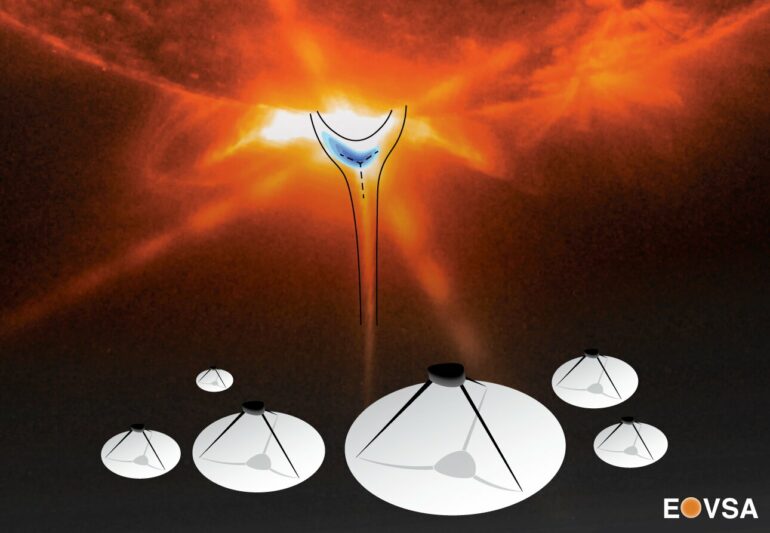Recently, a research team led by Prof. Gou Yanyu from the University of Science and Technology of China (USTC) of the Chinese Academy of Sciences (CAS) found that the solar outburst structure undergoes a complex reconfiguration evolution during the early outbursts. This is an important advancement in the study of solar outburst activity. This study was published in Nature Astronomy.
In classical images, the core structure of a solar eruption is a magnetic rope consisting of spirally wound magnetic lines. When the eruption begins, the magnetic ropes around the core are transformed by magnetic reconnection into spirally wound magnetic lines, which wrap around the original core, leading to its rapid growth in a “snowball” fashion. However, only about a third of the solar ejecta detected by various near-Earth and interplanetary spacecraft in situ possessed the expected magnetic structure, while the rest deviated significantly from classical images.
By studying a coronal mass ejection event, the researchers revealed that the pre-emergence magnetic rope structure underwent a complex series of stripping, disintegration and reconstruction during the outburst. Observational evidence suggested that the pre-burst S-shaped magnetic rope structure developed from small-scale “seeds.”
At the start of the outburst, the footpoints of the magnetic ropes are clearly outlined by a trapezoidal bright band in the lower atmosphere. During the subsequent violent outburst, the footpoints of the outburst structure are manifested as darkened regions in the corona due to the absence of material.
With the highly dynamic changes in the solar chromospheric flare band and the consequent drift of the coronal darkening region, the footpoints of the eruptive structure shift dramatically, barely intersecting with the footpoints of the pre-eruptive magnetic rope. This is clearly in contrast with classical images, which predicted that the coronal darkening region characterizing the footpoints of the eruptive structure should have covered the footpoints of the original magnetic rope.
The end of the flare zone shows a highly irregular pattern and a back-and-forth sawing motion, revealing a complex three-dimensional magnetic reconnection within the magnetic rope and between the magnetic rope and the surrounding field. These phenomena suggested that the three-dimensional magnetic field reconnection during the eruption replaces the magnetic flux of the original magnetic rope almost completely.
This study reveals the details of the process of complex three-dimensional magnetic reconnection and its important role in the formation of coronal mass ejections. It provides a new physical explanation for the generation of complex ejection structures in interplanetary space, and sheds light on space weather forecasting.
More information:
Tingyu Gou et al, Complete replacement of magnetic flux in a flux rope during a coronal mass ejection, Nature Astronomy (2023). DOI: 10.1038/s41550-023-01966-2
Provided by
Chinese Academy of Sciences
Citation:
Research team reveals reconfiguration process of solar eruptions (2023, May 26)



